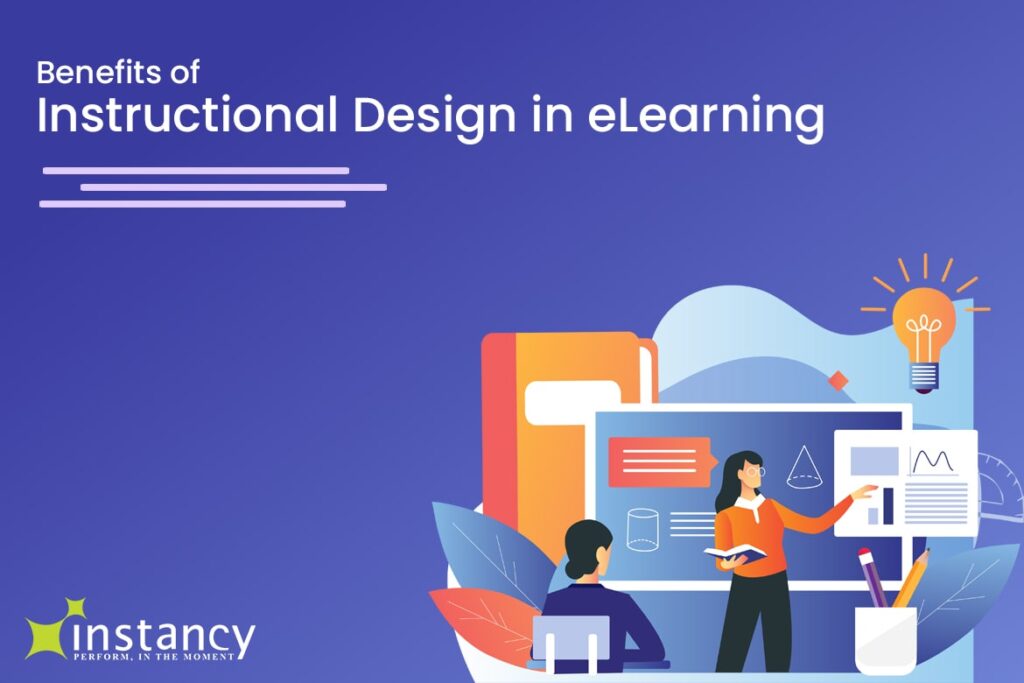Introduction
- How do you ensure that the designed course is effective?
- How do you ensure that the course will meet the learning goals?
- How do you ensure that the course includes all the components for a successful learningexperience?
- How do you ensure that the course is engaging enough to keep the interest of the learners alive?
These, and many such questions can be answered by including instructional design into youreLearning development process.
eLearning is a combination of technology and education or training. Instructional design bridges the two, keeping learning at the centre while designing and developing an eLearning course.
Very large number of people around the world are now taking eLearning courses in both, formal and informal ways. This further stresses on the need for instructional design to make eLearning more effective.
Let us understand how instructional design helps to make a good or more effective eLearningprogram.
Instructional Design Helps in Planning
Instructional design ensures that the learning material is planned in a systematic manner.
During the entire design process, the learning material must be able to answer four basic questions:
- Who and what are the characteristics of the target audience?
- What knowledge or skills must the target audience achieve at the end of the course?
- Which method should be applied to present the information to achieve maximum knowledge?
- How best can the course be evaluated to know if it is meeting the learning goals?
Once these questions are answered and applied in the design process, the course is bound toachieve maximum effectiveness.
Instructional Design Helps to Understand Learners
All learners cannot be grouped together with common background or needs. Each learner has specific characteristics and prior knowledge.
They come from different backgrounds, varied knowledge, experiences, interests, and goals. Despite these differences, it is necessary to identify a common aspect that connects all of them.
This can be achieved by conducting a survey to know the characteristics of the learners that could affect learning. This is known as needs assessment. Needs assessment is an integral part of instructional design process that is conducted before planning the course.
Needs assessment also helps to know what needs to be accomplished by the learners to reach the goals. It guides the overall design process and approach of the course.
Adult learners already have strong understanding of the basics and come with vast practical experiences.
They may be reluctant to take the course and have several questions, such as:
- Will the course provide me new information?
- Is it worth investing my time and effort?
- Will the course help me solve the challenges I’m facing?
Ideas from adult learning theories when applied help to answer these questions.
Not only this, but adult learning theories also help to understand the characteristics of the adult learners and design the course accordingly.
Instructional Design Helps to Improve Learner Engagement
Effective instructional design includes a thorough analysis of the learners before creating an online course.
Using this information, the course developers create learning designs that meet the learners’ needs. Relevant, engaging, and appealing learning activities are developed accordingly to keep the learners engaged.
Instructional Design Helps Distinguish “Need to Know” From “Nice to Know”
An important step in the instructional design process is identifying the need-to-know information and nice-to-know information. A few questions that help to distinguish between these are:
- Is the information critical?
- Do the learners need this information to perform their tasks
- How often will this information be used by the learners?
- What will be the impact if this piece of information is left out?
- Does the information relate to the overall learning objectives of the course?
Once these questions are answered, the ‘nice to know information’ is excluded, retaining only the information that is necessary for the learners. The focus thus remains only on task-based information that helps to improve the learner’s performance.
Instructional Design Helps to Choose Goal-Based Learning Methods
In instructional design, the course is designed by focussing on the outcome, that is, what the learner must accomplish after taking the course. A logical structure is built by identifying the concepts to be learnt and the sequence in which they must be presented. The learning material is created in alignment to these concepts for meeting the desired goals. To keep the learners engaged and promote learning, the course may then be developed using various media like animations, images, graphics, or simulations.
Instructional Design Helps to Evaluate Learners
Evaluation is necessary as it is the most reliable tool to know whether the learning goals have been met or not. In other words, instructional design acts as a tool to measure the effectiveness of a training program or course.
Various instructional design strategies are available to evaluate the learners. Self-evaluation, formative evaluation, summative evaluation, confirmative evaluation – all provide immediate feedback and tell if the learners have attained the desired knowledge.
Instructional Design Helps Boosts Learner Retention
Studies show that the human brain tends to recall 80% of what is seen and only 20% of what is read. Instructional design allows learners to not only acquire new knowledge but also retain it by integrating various visual elements into the course.
Instructional design helps to align the content with the learners needs. Chunking information and including only the ‘need to know’ content prevents cognitive overload. Enabling learners explore, discover and practice facilitates transfer of learning. It boosts retention of the learnt knowledge and skills through the course.
Ensuring learners retain the gained knowledge till the time they actually apply it is one of the benchmarks of a successful course.
Other Benefits of Instruction Design
Some additional benefits of instruction design can be listed as follows:
- Instruction design focuses on the learner’s experience.
- Instruction design maintains a consistency between several courses that may be developed by different teams working on eLearning.
- Instruction design covers all the stages of good development, thereby ensuring the quality of the course is maintained throughout.
- Instruction design helps to speed up development time, thus saving time.
- Instruction design can make the best use of available learning technologies.
These are some of the aspects of instructional design that show how instructional designing is crucial to eLearning development.
This blog is originally published at Google Site on 14th Apr 2021





